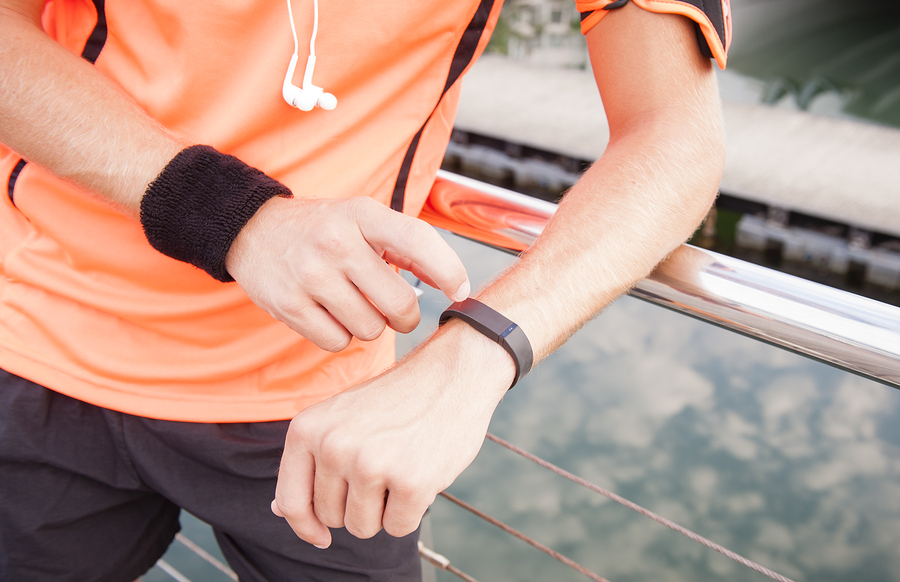Bluetooth Connected Devices
Until recently, people with visual impairments had to rely on special purpose devices, such as talking scales, to obtain access to many devices. However, with the mobile revolution in full swing, a new solution is emerging: Bluetooth or Wi-Fi connected devices that display their data on a smartphone and are thus accessible through the use of a mobile screen reader.
One early example is the iGrill family of smartphone connected thermometers. These Bluetooth enabled thermometers can be used in the oven or the backyard grill. Via the smartphone app, you can check the current temperature of what you're cooking, and set a “Done” alarm for when the food reaches a target temperature. Though the iGrill app is extremely accessible, other Bluetooth-enabled devices are not as successful (see Weighing the Accessibility of the Wahoo Balance Smartphone Scale and the Lose It! Healthometer Bluetooth Scale **** for a discussion of two such devices).****
The Fitbit fitness tracker is a tiny device that monitors and records how far you walk, calories burned, and other fitness related information. We presented a thorough accessibility review of the Fitbit Flex model in the August 2014 issue of AccessWorld.
The Apple iOS now contains both a Health Kit and a Home Kit app. These are platforms that makers of connected devices can tap in order to integrate their functions more smoothly with the phone and offer a more consistent user experience. We are in the early days of connected devices, and advocates are working hard to ensure the accessibility of this new class of products. As for now, you can usually download a connected device’s app for free before you make a purchase and perform your own accessibility check. Also consider becoming a regular reader of AccessWorld, where many of the latest devices and apps are reviewed for both functionality and accessibility.
Accessible Health and Wellness: There’s an App for That
As you begin to explore the world of mobile computing, you will find an amazing array of apps designed to help you keep track of exercise, diet, medication scheduling, and plenty more. Most are fairly if not completely accessible. Most are either free or offer a limited function free demo version, so you can usually check the accessibility before you buy. We cannot hope to list every health-related mobile app, but here is a healthy sampling to get you started. Search the Google Play Store or Apple App Store to find more.
RunKeeper
This free app can keep track of how far you run or walk, and give you intermediate distances and average speed of movement. It also creates a mostly inaccessible map of your route. RunKeeper is available for both Android and iOS.
My Fitness Pal
This free app allows you to keep a running food and exercise diary, entering your meals and workouts into the app or the website as you go. We offer a complete accessibility review of this app and website in the May 2014 issue of AccessWorld (My Fitness Pal: A Guide to an Accessible Fitness Tool)*.*****
Glucose Buddy
This free app for Android and iOS allows you to manually enter glucose numbers, carbohydrate consumption, insulin dosages, and activities. Then, you can view and print all of your data on a free online account.
